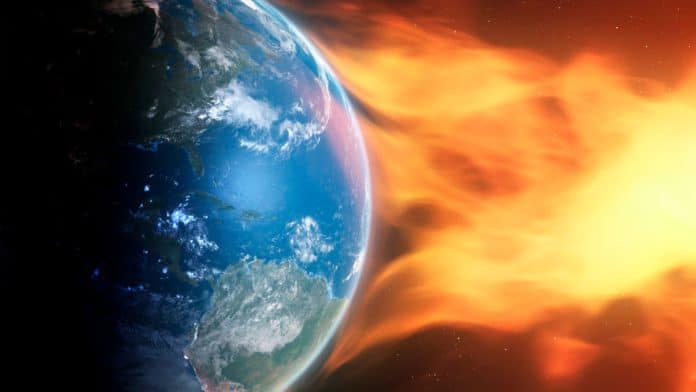A new report warned about a possible geomagnetic storm tomorrow, August 18. Two CMEs that erupted on August 14 and 15 are set to hit Earth together on August 18.
On August 14, a dark plasma eruption around sunspot AR3076 hurled one CME toward Earth. Traveling faster than 600 km/s (1.3 million mph), the plume tore through the sun’s outer atmosphere, creating a coronal mass ejection (CME).
Likewise, on August 15, an exploding magnetic filament launched another CME right behind it.
According to the prediction from the NOAA model, both CMEs could arrive together on Earth on August 18. And this could be the “Cannibal CME” event.
CME cannibalization occurs when the sun launches two eruptions within a short period of time, with the second of the two being more energetic and therefore faster than the first.
As reported in spaceweather.com, “The second CME might overtake and gobble up the first, creating a mishmash of the two.”
“NOAA forecasters have upgraded their geomagnetic storm watch from category G2 (moderate) to category G3 (strong) in response to models that suggest multiple CME impacts on August 18. During such storms, naked-eye auroras can descend into the USA as far south as Illinois and Oregon (geomagnetic latitude 50 degrees). Cameras with sensitive night-sky settings may record auroras even farther south than that.”
